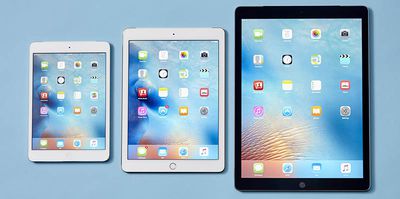Crashes, and subsequent fatalities, of small private planes have "fallen to the lowest levels in decades" thanks to mobile devices that give pilots "much better weather information" than a few years ago, along with other benefits. These devices mainly include Apple's iPad lineup and, in 2015, helped contribute to the lowest rate of fatal crashes ever recorded by the U.S. Federal Aviation Administration: 1.03 fatal accidents per 100,000 flight hours (via Bloomberg).

As pointed out by John Hansman, an astronautics and aeronautics professor at the Massachusetts Institute of Technology, the data should be "approached with care," due to the fact that there is far less information and data available on general aviation as opposed to commercial flights. Private airplane flights per year have also decreased, which would help lessen the overall chance for accidents in the first place. Still, the new data collected "jibes with broad new efforts to improve safety in that arena," according to Hansman.
“It’s encouraging,” said Hansman, who has studied private-aircraft safety data. “There are reasons to think it might be accurate. There’s a lot of things happening in the system that are slowly making it better.”
In reaction to these accidents, the FAA and the U.S. National Transportation Safety Board moved to bolster each private aircraft pilot's safety levels, leading to the official approval of "weather and other programs for mobile devices." To improve the regulation of these aircrafts, the two administrations also approved ways to make it easier to add safety equipment to planes, including devices that warn of engine failure and the impending loss of control of the plane.






















Top Rated Comments
The iPad has been an amazing device for aviation since it was introduced. I purchased the original iPad on launch day, the following week I took it to training at FlightSafety for my recurrent training. I had multiple groups of both instructors and pilots surround me, evaluating it for general use (laptop replacement) and flight specific uses.
Now I am on my second company issued laptop. We removed almost all the charts (we keep a few foreign enroute charts for backup) and all other charts are on the iPad, saving huge weight and hassle keeping them current. We removed most of the aircraft onboard manuals, and now have more detailed manuals available than before. We are in the test phase of removing the aircraft logbook, all documentation of previous squacks will be electronic.
On the job injuries (due to the weight reduction of the paper manuals we needed to carry on our luggage) has actually decreased as well.
Onboard, when operationally necessary (due to expensive in flight wifi costs) we can even hook the iPad/iPhone onto the onboard wifi, increasing our situational awareness enroute.
A few months ago we started using an app that easily calculates our takeoff/landing performance, required for every takeoff (we always assume an engine failure every takeoff). It has a worldwide database and is more accurate than the old procedures that used paper tables. I can run a performance check in 60 seconds vs the 1/2 hour it took before, which makes it easy to redo in rapidly changing weather.
It has been amazing how fast the iPad has been accepted into the cockpit.
Source -- http://www.apple.com/ipad/business/profiles/united-airlines/
For general aviation airplanes, there are a whole host of applications available that improve safety even though some are not really approved / prohibited for commercial operations in particular ... examples may include charts and maps with position indicated to make navigation and avoidance of terrain much easier, electronic display of nearby airplanes using ADS-B receiver, indication of airplane attitude (not intended for navigation purposes), etc.
There are surely other factors that have contributed to improved safety such as better weather forecasting and availability of these forecasts, advances in airplane instruments and engines, availability of parachute recovery systems, improvements in training, etc but I don't doubt that relatively low cost / high benefit of iPads and other tablets has made an positive impact.
My two cents :)